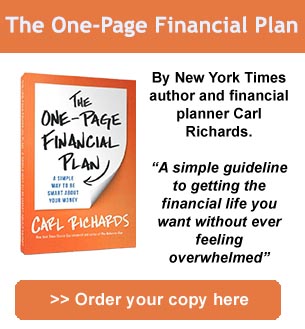I like buying high-quality things.
And for the longest time, I’ve had this sneaking suspicion that buying high-quality stuff, which perhaps initially was more expensive, actually saved me money in the long run.
It wasn’t until very recently, though, that I noticed a strong argument in support of my hunch.

The other day, I was researching this idea, trying to understand why I choose to buy nice things, and I came across a quote from Terry Pratchett in “Men At Arms,” part of the Discworld series.
In the book, Sam Vimes, a police officer from the fictional city-state of Ankh-Morpork, gives us a very compelling financial reason for buying higher-quality, rather than cheaper, things:
The reason that the rich were so rich, Vimes reasoned, was because they managed to spend less money.
Take boots, for example. He earned $38 a month plus allowances. A really good pair of leather boots cost $50. But an affordable pair of boots, which were sort of O.K. for a season or two and then leaked like hell when the cardboard gave out, cost about $10. Those were the kind of boots Vimes always bought, and wore until the soles were so thin that he could tell where he was in Ankh-Morpork on a foggy night by the feel of the cobbles.
But the thing was that good boots lasted for years and years. A man who could afford $50 had a pair of boots that’d still be keeping his feet dry in 10 years’ time, while the poor man who could only afford cheap boots would have spent a hundred dollars on boots in the same time and would still have wet feet.
This was the Captain Samuel Vimes “Boots” theory of socioeconomic unfairness.
Now this, I thought, was awesome.
Paradoxically, you can actually spend less by spending more.
I also realized that I’ve had many experiences with this phenomenon before.
Seventeen years ago, my wife and I had been married for three years, and we were living like poor college students.
She was working as a ski instructor, and I was going to school full time.
We had just had our first child.
We didn’t have a lot of extra money, but we loved to ski, and we needed new ski pants.
I had my eye on this pair of ski bibs from a high-end company called Moonstone.
At the time, Moonstone was making some of the best ski gear that money could buy, but these bibs were expensive.
I don’t remember exactly how much, maybe just over $300. 
I knew that according to conventional wisdom, I should have been buying the cheap pants at Walmart instead.
Without even knowing about Sam Vimes, I had this gut feeling that I should buy the Moonstone pants.
So we saved and saved and saved, and finally, I bought them.
And I still have them.
A full 17 years later.
Whenever I go skiing, that’s what I wear.
And guess what?
They still work.
Just as good as the day I bought them.
And I can almost guarantee you, if I had bought the $50 pants from Walmart, they would have been gone before the end of the first season.
I would have had to buy those $50 pants at least 17 more times over the years, spending more than $800, to get as much use out of them as I have from my Moonstone pants.
pants.
Not only would I have had the cognitive, emotional and logistical drain of perpetually having to replace the old pants, as I’ve alluded to in a previous column, but I would have spent more than twice as much money in the long run.
For those of you who are nodding along knowingly, now you have a neat framework to evaluate your purchases.
And for those of you who have been buying the cheap pants for years, consider this an invitation to throw them away for the last time, and to start saving money by buying better pants once.
This column originally appeared at the New York Times on February 1, 2016.
from Property UpdateProperty Update https://propertyupdate.com.au/spend-more-now-less-financial-pain-later/

No comments:
Post a Comment